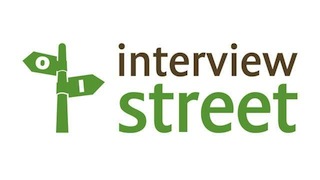How does one find new startup ideas?
Every business is built around solving a customer pain. Solving a customer pain creates value which in turn, if successfully harnessed, can be monetized. Platforms, in particular, connect demand and supply to solve customer pain on both sides.
Platform Thinking And Startup Ideas
One of the patterns for new startup ideas, that I often see in platforms, is the following:
Match an unmonetized/unvalued surplus with an unsatisfied scarcity.
This requires a unique combination of two factors:
1) Unmonetized/unvalued surplus: This implies that there is some form of surplus which cannot be monetized at the moment. However, given the opportunity, the owners would want to monetize it. A similar dynamic exists for surplus that isn’t currently valued by an audience/market (e.g. a person’s creativity).
2) Unsatisfied scarcity: The second important factor is scarcity. More specifically, scarcity that isn’t currently optimally satisfied. There might be solutions to the scarcity but none of them are optimal enough.
 A good balance of both factors is required. If the scarcity is already being addressed, there may not be any need for a new solution. If the surplus is already monetized, it may be difficult for the producer to engage with more means of monetizing the surplus.
A good balance of both factors is required. If the scarcity is already being addressed, there may not be any need for a new solution. If the surplus is already monetized, it may be difficult for the producer to engage with more means of monetizing the surplus.
Hence, both aspects are equally important for the platform to exist. Also, depending on which of the two aspects is stronger, the seeding of the platform may start either with tapping the demand or with harnessing the surplus.
At the very outset, let me clarify that this is one of many different patterns for finding new startup ideas. Even among platforms, many different form of patterns exist.
Understanding Surplus And Scarcity
Surplus may exist in various forms. It may be a surplus of time, attention, money, physical commodities. Let’s look at a few examples below:
A surplus of accommodation in a particular location during a certain time period
MEETS
A scarcity of accommodation in that same location during the same time period.
Amazon Mechanical Turk, TaskRabbit:
A surplus of time to perform certain tasks
MEETS
A scarcity of time to perform those same tasks.
A surplus of investable capital
MEETS
A scarcity of capital
A surplus of niche skills and talents
MEETS
A scarcity of niche skills
A surplus of knowledge on a niche topic
MEETS
A scarcity of knowledge on the same topic
A surplus of physical items
MEETS
A scarcity of those same physical items
A surplus of niche creativity
MEETS
A scarcity of niche entertainment
This model isn’t limited to online networks alone. Offline spaces also allow this model if you can achieve concentration of supply within a limited physical space. Coworking spaces like The Hub are an example of such a model, matching a surplus of office space with those in need of one.
A Final Note On Platform Ideas
For a given idea,
1. Identify the commodity that’s being traded, a target segment where a surplus exists and a segment with a scarcity
Again, surplus and scarcity that are currently not being utilized or satisfied are likely to come on board much faster.
2. Determine degree of overlap between the two target segments to allow the transfer to occur
Since scarcity and surplus need to be matched, there should be a high level of overlap between the two sides. Hence, it often helps to start by targeting a micro-market which provides a good concentration of demand and supply.
3. Determine factors based on which the two sides will be matched
The matching needs to be determined based on certain factors to ensure that the scarcity and surplus successfully satisfy each other. Quora determines matches through an “Ask To Answer” feature which surfaces the users most likely to have an answer to a certain question based on their history of answers on that topic. AirBnB matches accommodation surplus with scarcity based on time (exact dates) and location (exact place).
In summary,
Match an unmonetized surplus with an unsatisfied scarcity.
This article was first featured on Sangeet’s blog, Platform Thinking (http://platformed.info). Platform Thinking has been ranked among the top blogs for startups, globally, by the Harvard Business School Centre for Entrepreneurship






